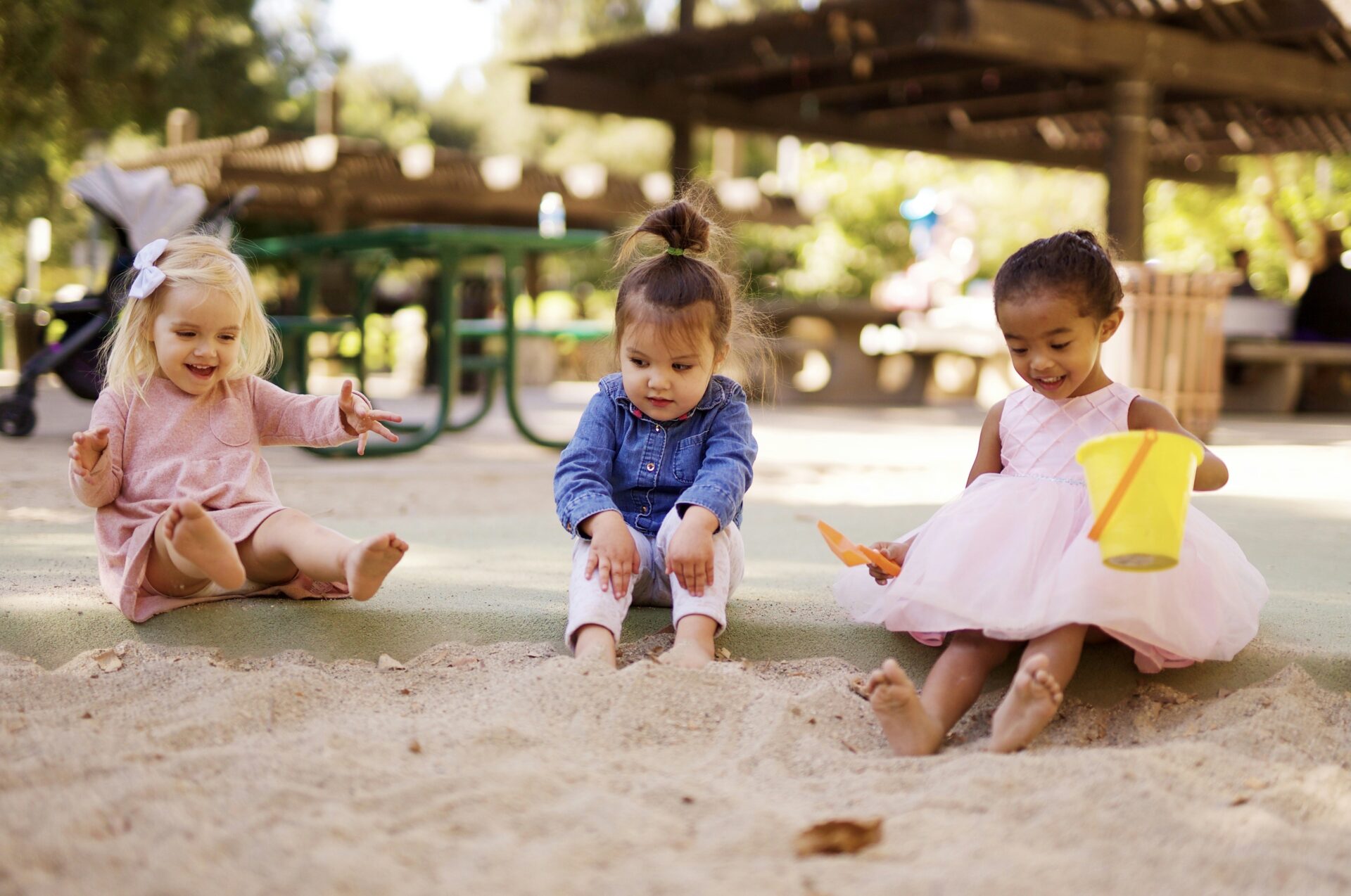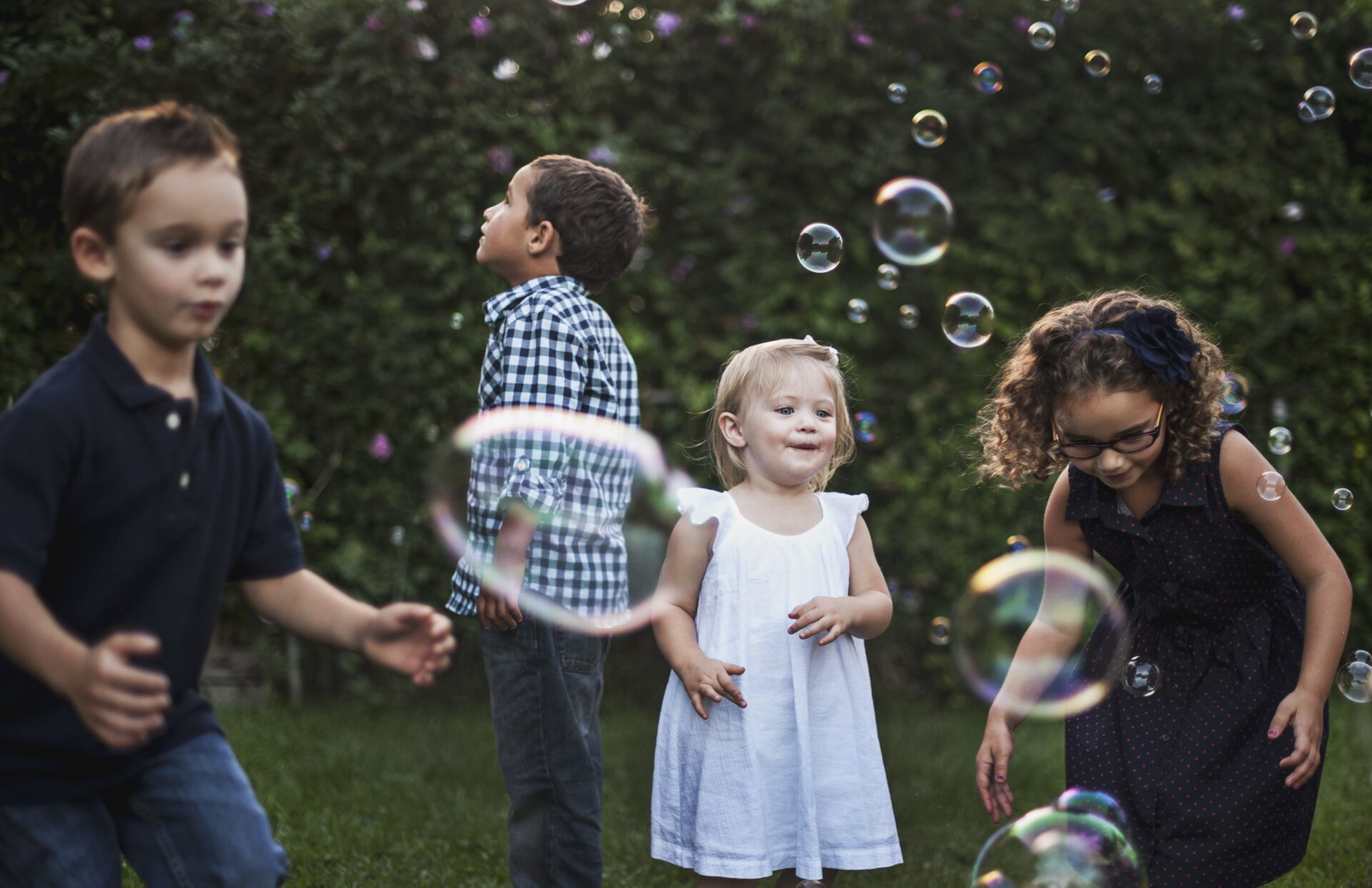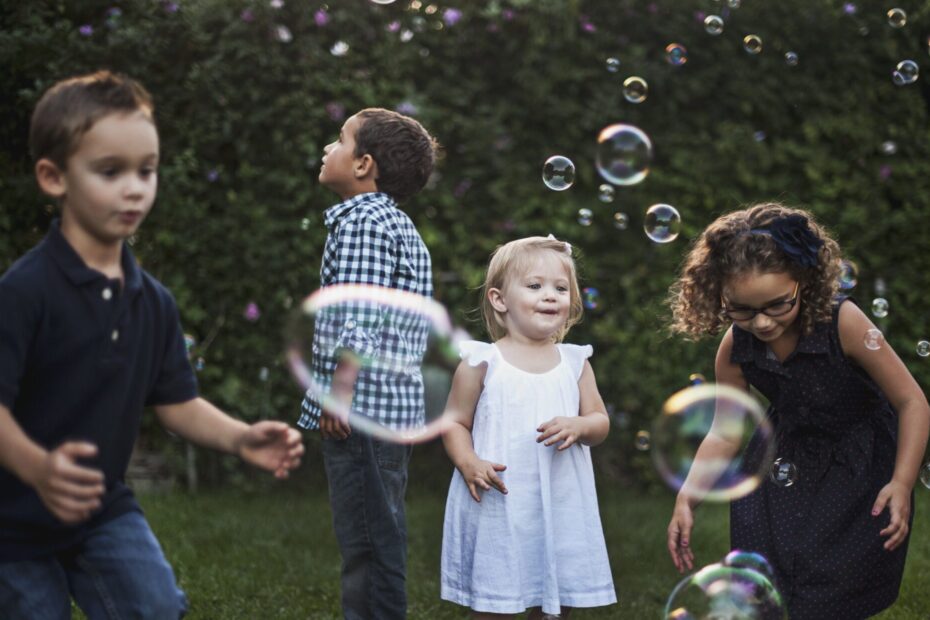In “Early Learning Al Fresco: Incorporating Outdoor Play Into Your Baby Or Toddler’s Educational Journey,” we explore the immense benefits of outdoor play for young children and how it can significantly contribute to their educational development. By immersing your little ones in the wonders of nature, they can engage in creative activities that stimulate their imagination, foster problem-solving skills, and promote physical development. This article serves as your guide to infusing joy, laughter, and a touch of whimsy into everyday life, showing you how to cultivate a vibrant atmosphere that nurtures creativity and allows for delightful learning experiences.
Early Learning Al Fresco: Incorporating Outdoor Play into Your Baby or Toddler’s Educational Journey
Chapter 1: Benefits of Outdoor Play
1.1 Developmental Benefits
Outdoor play offers a wide range of developmental benefits for babies and toddlers. It allows them to explore their surroundings, stimulate their senses, and build their cognitive, physical, and social-emotional skills. Through outdoor play, children have the opportunity to engage in hands-on learning experiences that support their overall development.
1.2 Physical Benefits
Engaging in outdoor play promotes physical fitness and contributes to the overall health and well-being of babies and toddlers. It allows them to engage in active play, such as running, climbing, jumping, and balancing. These activities help develop their gross motor skills, coordination, and strength. Additionally, exposure to natural sunlight allows for the production of Vitamin D, which is essential for healthy bone growth.
1.3 Emotional Benefits
Outdoor play provides numerous emotional benefits for babies and toddlers. Being in nature promotes a sense of calmness and reduces stress levels. It allows children to experience a sense of freedom and independence as they explore their surroundings. Outdoor play also enhances their mood and overall happiness, fostering a positive emotional well-being.
Chapter 2: Creating an Outdoor Play Environment
2.1 Designing a Safe and Stimulating Space
When creating an outdoor play environment for babies and toddlers, it is crucial to prioritize safety and stimulation. Ensure that the area is free from hazards, such as sharp objects or toxic plants. Use child-friendly equipment and install safety measures, like childproof gates or fences. Additionally, provide a variety of age-appropriate toys and materials that encourage exploration and imaginative play.
2.2 Incorporating Natural Elements
Integrating natural elements into the outdoor play environment promotes a deeper connection with nature. Consider including elements such as sandboxes, water tables, or a small garden patch. Provide opportunities for children to interact with natural materials like rocks, leaves, and sticks. This can foster a sense of wonder, curiosity, and appreciation for the natural world.
2.3 Choosing Age-Appropriate Toys and Equipment
Selecting age-appropriate toys and equipment is essential in creating a safe and engaging outdoor play environment. Choose items that are suitable for the developmental stage of babies and toddlers. Simple toys like balls, buckets, and shovels can encourage active play and fine motor skill development. Ensure that equipment like swings or slides are designed for their age group and meet safety standards.

Chapter 3: Outdoor Learning Activities
3.1 Sensory Play in Nature
Outdoor sensory play engages babies and toddlers in stimulating experiences that activate their senses. Activities such as playing in a sensory bin filled with sand, water, or nature objects like pinecones or leaves can enhance sensory exploration. Sensory play promotes cognitive development, language skills, and creativity.
3.2 Exploring the Natural World
Encouraging babies and toddlers to explore the natural world exposes them to various textures, sounds, smells, and sights. Take them on nature walks, encourage them to touch leaves and flowers, or listen to the sounds of birds. Exploring nature supports their cognitive development, enhances their observation skills, and fosters a sense of wonder and curiosity.
3.3 Gardening and Planting
Engaging in gardening and planting activities introduces babies and toddlers to the concept of growth and nurturance. Provide them with child-sized gardening tools and let them plant seeds or care for small plants. This activity promotes responsibility, fine motor skills, and an understanding of the natural cycle of life.
3.4 Nature Scavenger Hunts
Nature scavenger hunts are engaging activities that promote learning and exploration. Create a simple scavenger hunt checklist for babies and toddlers, including items like leaves, flowers, or rocks to find. This activity encourages observation skills, problem-solving, and fosters a sense of accomplishment as they find each item.
Chapter 4: Integrating Learning and Play
4.1 Outdoor Math and Science Activities
Outdoor play provides an excellent opportunity to incorporate math and science learning. Counting objects found in nature, identifying shapes or colors, or conducting simple science experiments like observing melting ice can be enjoyable and educational. These activities promote critical thinking, problem-solving skills, and early math and science concepts.
4.2 Language and Literacy Games
Outdoor play can enhance language and literacy skills for babies and toddlers. Engage them in language-rich activities such as storytelling, singing songs, or playing word games. Take advantage of natural surroundings to introduce vocabulary related to nature. These activities support language development, communication skills, and early literacy.
4.3 Art and Creativity in Nature
Nature offers abundant inspiration for artistic and creative activities. Set up an outdoor art station with materials like paint, brushes, and natural objects. Encourage babies and toddlers to create art with leaves, flowers, or mud. Engaging in outdoor artistic activities nurtures creativity, self-expression, and fine motor skills.
4.4 Music and Movement Outdoors
Outdoor play provides an ideal space for babies and toddlers to engage in music and movement activities. Play music and encourage them to dance, clap, or stomp their feet. Musical instruments like drums, tambourines, or shakers can also be incorporated. Music and movement activities support physical development, coordination, and self-expression.

Chapter 5: Overcoming Challenges and Safety Considerations
5.1 Dealing with Weather Conditions
Weather conditions can sometimes pose challenges to outdoor play. It is essential to take necessary precautions to ensure the safety and comfort of babies and toddlers. Dress them appropriately for the weather, provide shade and sunscreen during sunny days, and move indoor activities or seek shelter during extreme weather conditions.
5.2 Ensuring Supervision and Child Safety
Supervision is crucial during outdoor play to ensure the safety of babies and toddlers. Always have a responsible adult present to monitor their activities, especially when using play equipment or exploring unfamiliar areas. Set clear boundaries and rules to prevent accidents, and regularly check the play area for any potential hazards or risks.
5.3 Managing Environmental Risks
When venturing into natural environments, it is essential to manage environmental risks. Be aware of potential hazards such as poisonous plants, insects, or small bodies of water. Teach babies and toddlers about potential dangers and how to avoid them. Regularly inspect the play area for any potential risks and take necessary precautions to prevent accidents.
Chapter 6: Incorporating Outdoor Play into Daily Routines
6.1 Outdoor Play during Morning and Bedtime Routines
Incorporating outdoor play into morning and bedtime routines can provide a refreshing start to the day or a calming transition to bedtime. Allocate time for outdoor play in the morning, allowing babies and toddlers to engage in physical activities and stimulate their senses. In the evening, engage in calm outdoor activities such as stargazing or gentle walks to promote relaxation and prepare for sleep.
6.2 Making the Most of Weekends and Holidays
Weekends and holidays offer extended periods for outdoor play and exploration. Plan special outdoor activities such as picnics, nature hikes, or visits to local parks or playgrounds. Encourage family bonding and create memorable experiences by engaging in outdoor adventures during these times.
6.3 Outdoor Play for Working Parents
For working parents, incorporating outdoor play during weekdays can be challenging. However, even small pockets of outdoor time can have significant benefits. Prioritize shorter outdoor play sessions during breaks or after work hours. Find nearby parks or open spaces to visit during weekends or plan outdoor activities as a family during non-working days.

Chapter 7: Nurturing a Love for Nature and the Outdoors
7.1 Eco-friendly Practices and Sustainability
Nurturing a love for nature goes beyond outdoor play; it involves instilling eco-friendly practices and promoting sustainability. Teach babies and toddlers the importance of caring for the environment through actions such as recycling, conserving water, and reducing waste. Encourage them to be mindful of their surroundings and to appreciate the beauty of the natural world.
7.2 Teaching Respect for Nature
Teaching respect for nature is essential in encouraging babies and toddlers to develop a lifelong connection with the outdoors. Teach them to treat plants, animals, and natural resources with care. Instill the values of empathy and responsibility towards the environment by modeling respectful behavior and explaining the interconnectedness of all living things.
7.3 Connecting with Local Parks and Playgrounds
Connecting with local parks and playgrounds can enrich babies and toddlers’ outdoor experiences. Visit different parks in your area and explore their unique features. Participate in community events or programs offered by parks or local organizations. This engagement fosters a sense of community, offers opportunities for socializing, and expands children’s exposure to various outdoor environments.
Chapter 8: Outdoor Play for Different Ages and Stages
8.1 Outdoor Play for Infants
Outdoor play for infants focuses on sensory stimulation and gentle exploration. Provide safe and comfortable spaces for them to lie down or sit. Engage them in activities such as gentle swings, tummy time on soft mats, or introducing different textures through touch. Avoid direct exposure to sunlight and ensure proper hydration and protection against insects.
8.2 Outdoor Play for Toddlers
Toddlers have increased mobility and curiosity, making outdoor play an exciting opportunity for exploration. Encourage active play with age-appropriate equipment like slides, climbers, or ride-on toys. Engage them in simple games like hide-and-seek or kicking a ball. Provide opportunities for messy play with sand or water, and allow them to interact with nature through activities like collecting leaves or rocks.
8.3 Outdoor Play for Preschoolers
Preschoolers can engage in more complex outdoor activities that promote skill development and imaginative play. Encourage them to climb structures, ride a bike, or engage in organized outdoor games. Facilitate pretend play by creating outdoor themed play areas such as a pretend camping site or a fairy garden. Provide opportunities for more involved nature exploration and teach them basic nature identification skills.
Chapter 9: Engaging in Outdoor Play with Other Children
9.1 Playdates in the Park
Playdates in the park offer opportunities for babies and toddlers to engage in outdoor play with other children. Coordinate with other parents and schedule regular playdates in local parks or playgrounds. This allows children to socialize, develop social skills, and learn from each other’s play styles.
9.2 Joining Outdoor Playgroups
Joining outdoor playgroups provides a supportive community for babies and toddlers to engage in outdoor play together. Research local playgroups that focus on outdoor activities and connect with other families who share similar interests. Participating in outdoor playgroups offers opportunities for group play, shared experiences, and expanded social circles.
9.3 Organizing Outdoor Play Events
Organizing outdoor play events can bring families together to enjoy outdoor play on a larger scale. Plan community-oriented events such as picnics, outdoor parties, or group nature walks. These events foster community bonding, promote social interaction among children, and create a sense of belonging to a larger outdoor play network.
Chapter 10: Extending Learning Beyond the Outdoors
10.1 Bringing Nature Indoors with Nature-themed Crafts and Activities
Bringing nature indoors through nature-themed crafts and activities allows babies and toddlers to continue their learning beyond the outdoor environment. Engage them in art projects using natural materials like leaves, flowers, or rocks. Create nature-inspired sensory bins or engage in storytelling and literacy activities with nature-themed books. These activities reinforce their connection to nature and encourage further exploration.
10.2 Documenting Outdoor Adventures with Journals and Scrapbooks
Documenting outdoor adventures through journals, scrapbooks, or photo albums helps preserve memories and reinforces learning experiences. Encourage babies and toddlers to contribute to a nature journal by drawing or pasting pictures of their outdoor discoveries. Create scrapbooks with photographs they have taken during outdoor expeditions. These activities promote reflection, creativity, and language development.
10.3 Building on Outdoor Experiences with Books and Educational Resources
Building on outdoor experiences through books and educational resources provides additional opportunities for learning and exploration. Introduce babies and toddlers to nature-themed books, both fiction and non-fiction. Use educational resources or online platforms that offer nature-related activities, videos, or games. These resources enhance their understanding of the natural world and promote further engagement in outdoor play.
Incorporating outdoor play into your baby or toddler’s educational journey offers an array of developmental, physical, and emotional benefits. By creating a safe and stimulating outdoor play environment, engaging in nature-based learning activities, integrating learning and play, and considering safety considerations, you can effectively incorporate outdoor play into daily routines. Nurturing a love for nature and the outdoors, tailoring outdoor play for different ages and stages, engaging in outdoor play with other children, and extending learning beyond the outdoors further enriches their educational journey. So gear up, step outside, and embrace the wonders of outdoor play with your baby or toddler.

